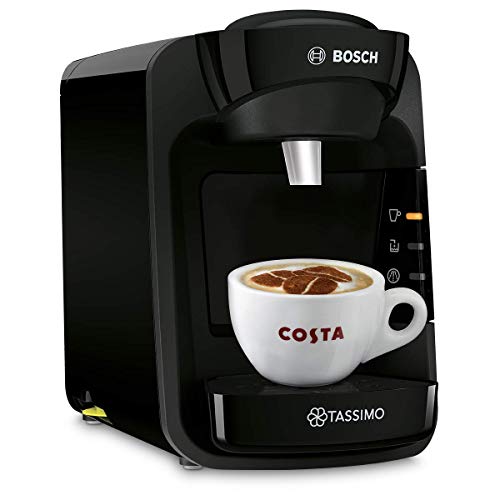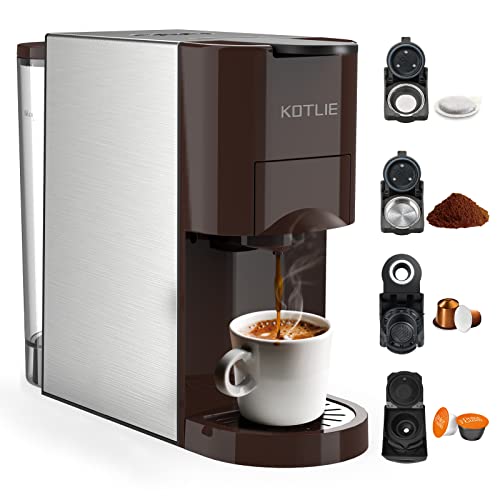Buzzwords De-Buzzed: 10 Other Ways To Say Pod-Making Machines
페이지 정보

본문
 Detergent Pod-Making Machines
Detergent Pod-Making MachinesFrom K-Cup(r) and Tassimo(tm) to Nespresso(tm) and Senseo(tm), there are many different pod coffee machine and pods machines to choose from. Each pod coffee machine works similarly, by heating water and pressing buttons.
 The process of making pods is more complex however, it is still simple enough to do yourself. Here are a few points to keep in mind when buying a pod-making device:
The process of making pods is more complex however, it is still simple enough to do yourself. Here are a few points to keep in mind when buying a pod-making device:Detergent Pod Manufacturing
Detergent pods are easy to use efficient, effective, and eco-friendly. How do they make them? The process is surprising simple. A single-dose capsule contains a dissolvable film that dissolves when in contact with water. The film is typically made of polyvinyl ethanol, which dissolves easily in water and does not leave any residue on clothing. A few additional ingredients go into the detergent formula that include chelating agents to soften hard water and decrease detergent degradation optical brighteners to make whites look better and also fragrances or other additives to provide pleasant scents.
The sachets then get sealed to protect the contents from contamination and moisture during transport, storage, and use. Laundry pod manufacturers employ high-speed production techniques to keep up with demand. They can produce between 600 and 240 pods per minute, which makes sure that products meet delivery deadlines.
Tide manufactures a portion of these pods. The company uses high-quality, U.S-made ingredients, and does not import cheaper substitutes. It also takes steps to trace and verify raw ingredients.
A machine for making laundry pods includes a product hopper that stores liquid detergent before it's used. A precision dispenser then fills each pod to the exact amount of detergent. The machine then heat seals the pod. The machine's patented design protects the film's water solubility while routine inspections maintain 0.02ml filling accuracy.
The films of Pod also contain minor components, like denatonium which gives them a bad flavor and helps to keep liquids out. For instance, MonoSol uses Bitrex, the quaternary ammonium compound referred to as denatonium. The chemical is so bitter that it can repel humans at concentrations as low as 0.01 percent. It also discourages children and pets from putting sachets of the chemical in their mouths.
When you are not using your laundry pods store them away from children and pets. Keeping them away from moisture and light will prevent the ingredients from degrading quickly and storing them in a proper manner can prolong the life of the detergent inside the pod. Also, ensure that you remove laundry pods from the premises after use.
Detergent Packaging of Pods
Detergent pods are a booming trend, gaining market share for laundry and dishwasher detergents as well as personal products such as shampoo. They are a concentrated mix of surfactants, cleaning ingredients, and a water-soluble coating. They are easy to use, convenient to store, and are a safe alternative to liquid detergents.
Pods aren't the same as traditional detergent containers made from PET plastic, which can contain harmful chemicals like 1,4 dioxane. Instead, they are made up of an assortment of harsh chemicals, enclosed in a polyvinyl alcohol film. The chemicals used in these containers can differ based on the brand. They may include bleaches and surfactants as well in optical brighteners, solvents or enzymes. Manufacturers disclose these ingredients on their websites.
The PVA film used to encase pods is biodegradable, and included in the CleanGredients database of the Environmental Protection Agency. It also has received the Nordic Swan eco-label, one of the most rigorous eco-labels that exist. The EPA notes it can be broken into simple, natural substances found in soil and wastewater plants.
Laundry pods are a popular alternative to liquid detergents and a variety of brands offer an array of options, ranging from basic laundry detergent to fabric softeners and stain removers. According to a Nohbo study in the US, laundry pods account for 15% of household soap sales.
Most pods contain a single dose, however some contain fabric softeners, stain removers, as well in scent boosters. Many manufacturers include anti-bacterial properties in the detergent to fight against bacterial growth, too.
Despite their ease of use However, some have complained that the laundry pods aren't able to dissolve completely. This can be a result of overfilling the washer tub or using water that is extremely cold, or adding the pods too soon in the cycle. This can also happen if a consumer doesn't read the instructions, since the pods need a specific temperature and pressure to dissolve.
They aren't toys, therefore consumers should keep them out of reach of children. Ensure they are stored in a secure area to store them. They should also be empty before being put in the washing machine or dishwasher. The packaging that is left behind should be recycled as soon as is possible to avoid pollution and reduce the amount of waste.
Detergent Pod Filling
Laundry pods are fast replacing liquid detergents traditionally used in the household cleaning market. These tiny containers are easy to use, and they don't require measuring. They also come in different sizes and strengths. Depending on the kind of laundry you wash, you can choose between single-dose pods or multi compartment pods or even powder detergent.
The secret to pods is their thin encapsulating film. It has to maintain its shape while retaining chemically active liquids and solids, however, it must dissolve quickly and completely in water--even cold water. Many companies have settled on a polymer known as PVA which has both of these properties. The remainder of the pod consists of powerful detergents, bleaches and solvents. It also has optical brighteners, preservatives enzymes, and preservatives. Typically, manufacturers reveal their detergents' ingredients.
Pods are made from plant-based polymers, in contrast to powder and liquid detergents which are packaged in high-density plastic. Microbes break down these polymers in soil or water. According to scientists from the Woods Hole Oceanographic Institution, PVA breaks down in less than 70 days in sewage and sludge. That's significantly faster than conventional detergent, which takes hundreds of years to break down.
While laundry pods have revolutionized the industry of laundry, they're not without their disadvantages. They're, for one, more expensive than powder and liquid detergents. If you happen to accidentally lick the pod, you will be confronted by a unpleasant taste and burning chemically.
Another drawback is that they're not as versatile as traditional detergents. Using a laundry pod limits you to the particular wash cycle specified on the packaging. This could be a problem if you have a front- or top-loading washer equipped with an automatic detergent dispenser or fabric softener. If your machine is equipped with an agitator, the pods might not disintegrate properly.
If you're interested in trying laundry pods, talk to a local laundry shop about the best capsule coffee machine choice for your machine and clothes. Be sure to take the time to read the directions carefully. If your clothes have streaks or spotted after washing with a pod, immediately rewash them without adding more detergent. Never dry clothes that are stained by detergent because the heat may make it difficult to get rid of the stains later.
Detergent Pods Inspection
Laundry detergents pods are well-known because they dissolve quickly and efficiently in hot, soapy water and remove stains on most fabrics. The pods are not without controversy. Many activists refer to them as plastic and they are a rising source of litter and marine debris. While it is true that the polyvinyl alcohol and PVOH that are used to make pods are made from petroleum, the manufacturers argue that these plastics are not as harmful as other kinds of plastics since they are biodegradable in water.
Since the first laundry pods were introduced in 2012, they've become extremely popular and make up more than a third of the nation's liquid detergent sales. Numerous major brands are now selling the Sachets, which are similar in size to ice cubes, and are available in a variety of scents and colors. They are also marketed as green with the Cleaning Institute (which represents large detergent multinationals like Procter and Gamble) arguing that the concentrating of detergent into a pre-measured dosage results in smaller packaging, less weight, and lower shipping emissions. The manufacturer also claims that the pods' starches from plants and other natural materials aid in making them water-soluble and they biodegrade within a short period of time in water treatment plants.
However, despite all the hype the pods can be risky if handled incorrectly. The thin membranes that hold the detergent may break easily and cause irritation to the skin or eyes If inhaled by large amounts, they could cause poisoning with chemicals. The outer packaging that is designed to protect children from the pods can also split at the zipper track. Consumer Reports asked manufacturers to make pods safer in September 2012 by converting the transparent containers to opaque ones, and introducing child-proof locks. A number of manufacturers responded, and a few have added additional safety warnings.
To avoid any issues To avoid any issues, keep the pods coffee machines away from seniors, children, and pets. Keep them in a high place or lock them away to stop children from mistakenly identifying the pods for candy. Also, ensure that you use a detergent that is compatible with the type of washer. Be aware that cold water, especially when it's below 60 degrees Fahrenheit--might not fully dissolve the pod, and it could clog your machine or leave detergent residue on your fabric.
- 이전글11 Creative Methods To Write About Newborn Injury Lawyer 24.12.06
- 다음글7 Tips To Make The Maximum Use Of Your Buy Wheel Loader Driving License Online 24.12.06
댓글목록
등록된 댓글이 없습니다.




